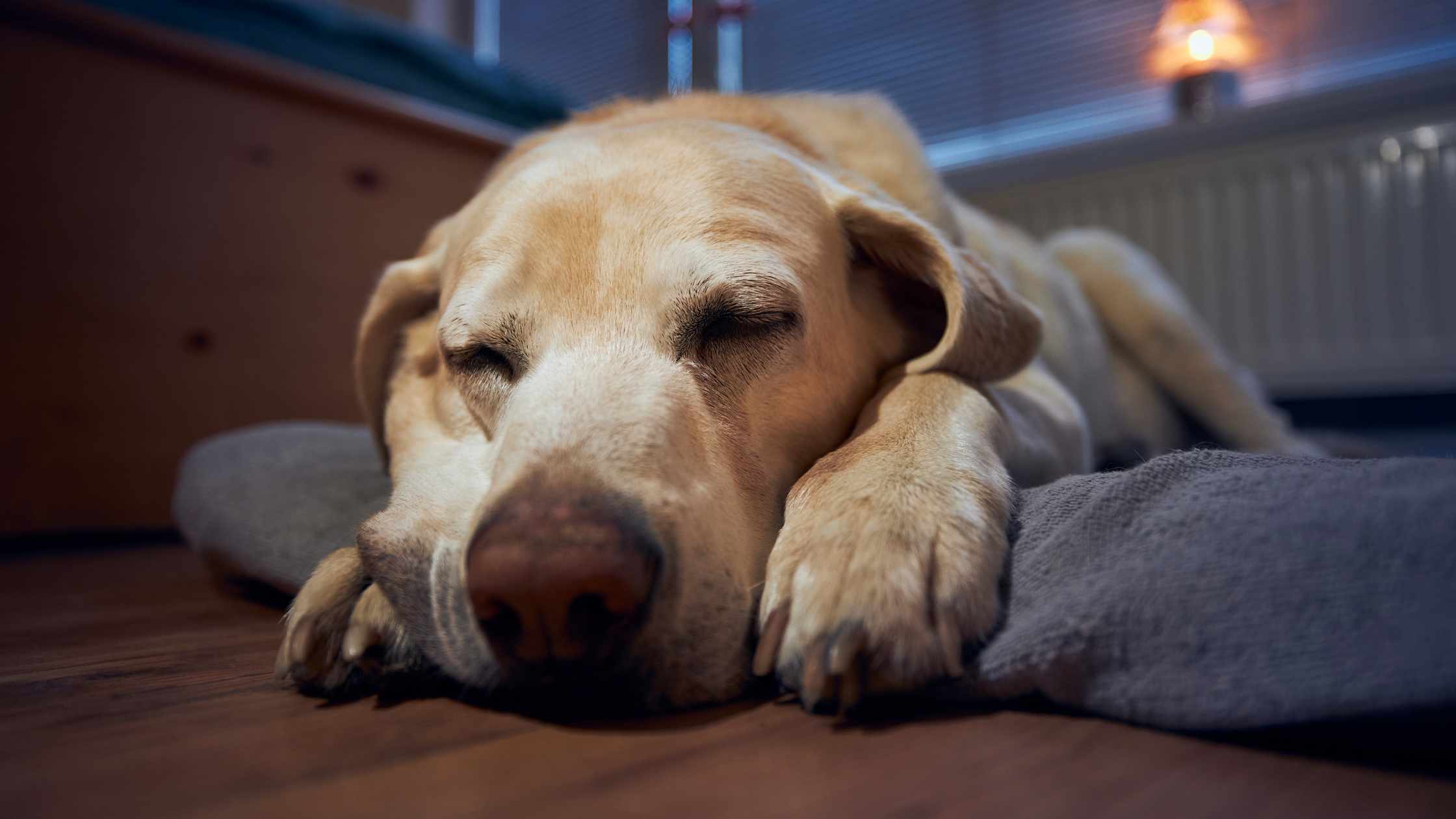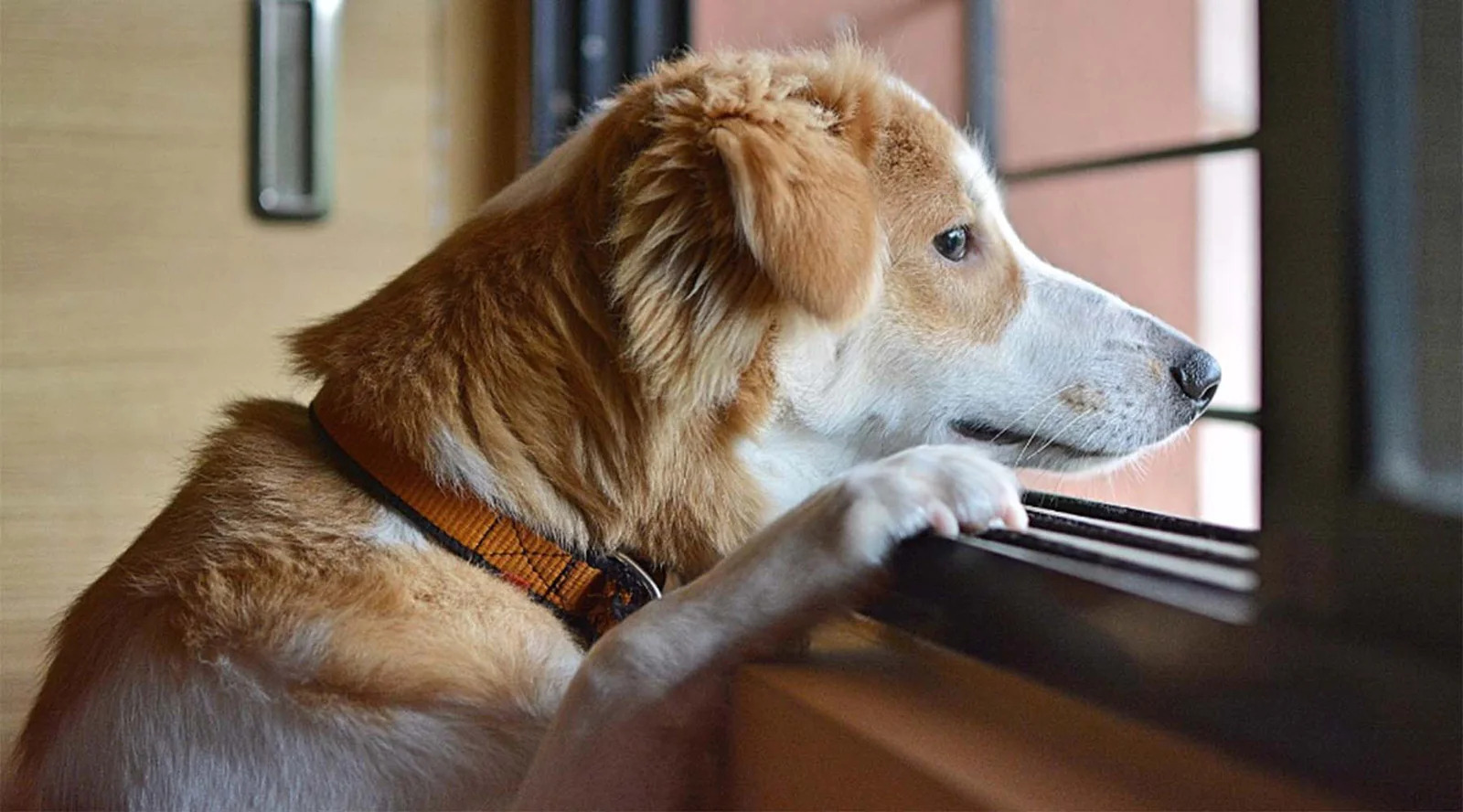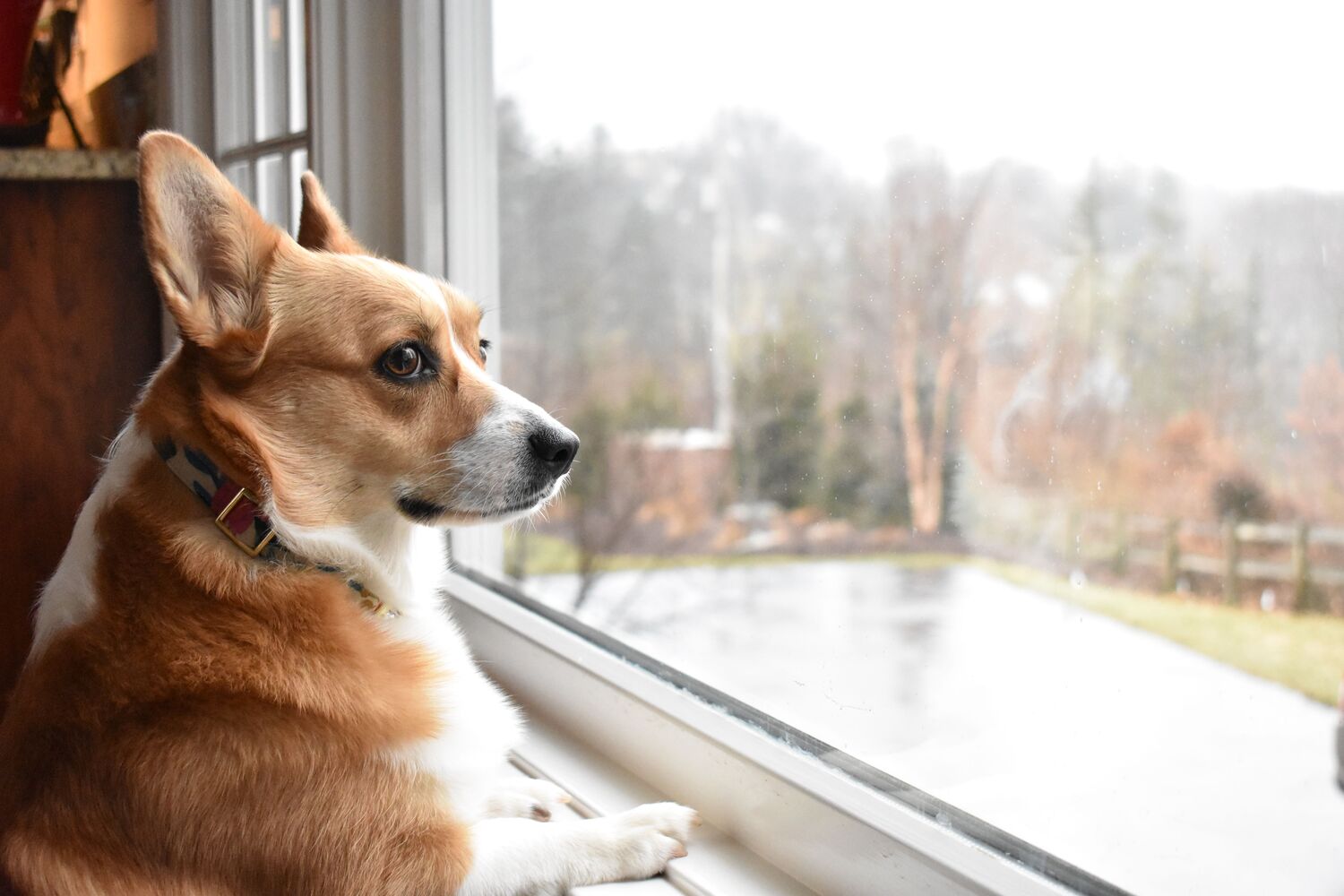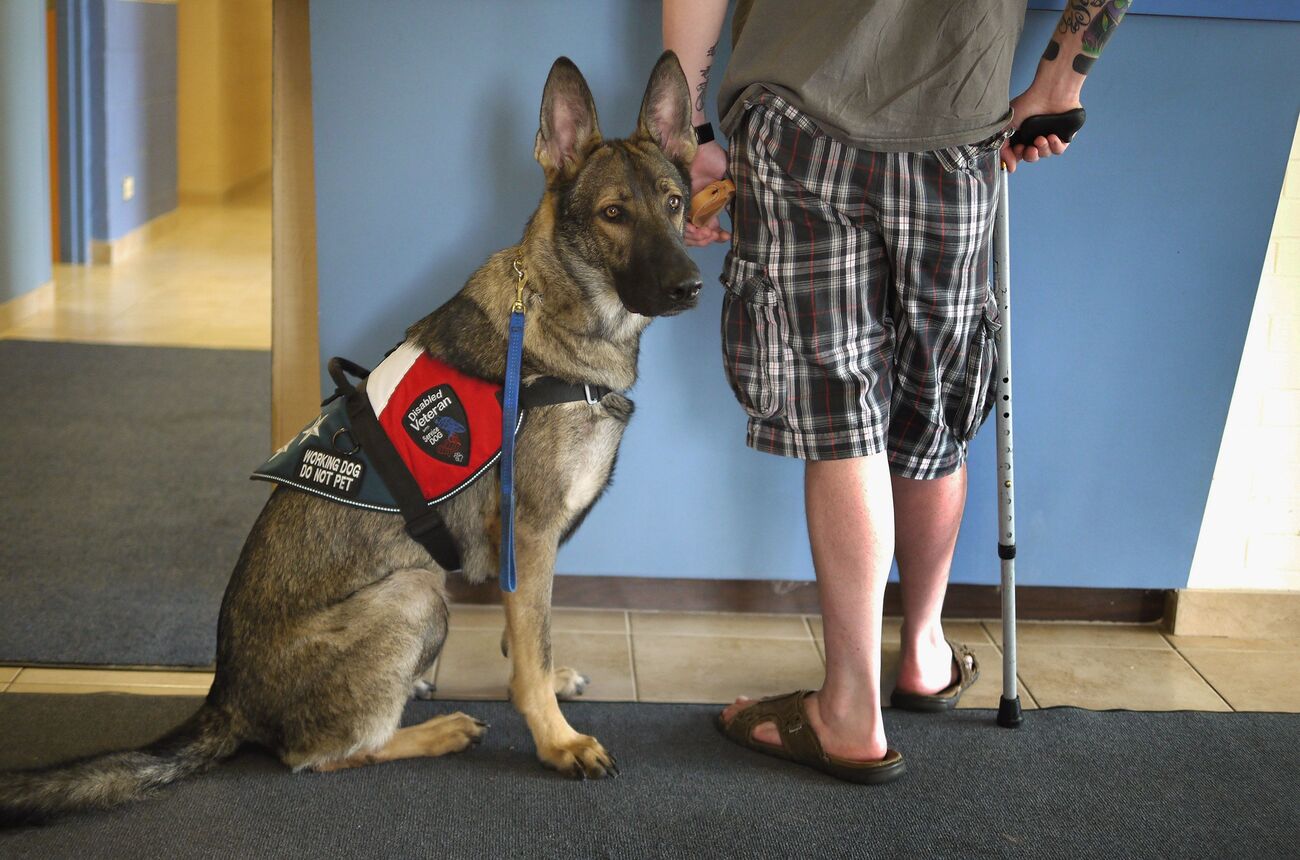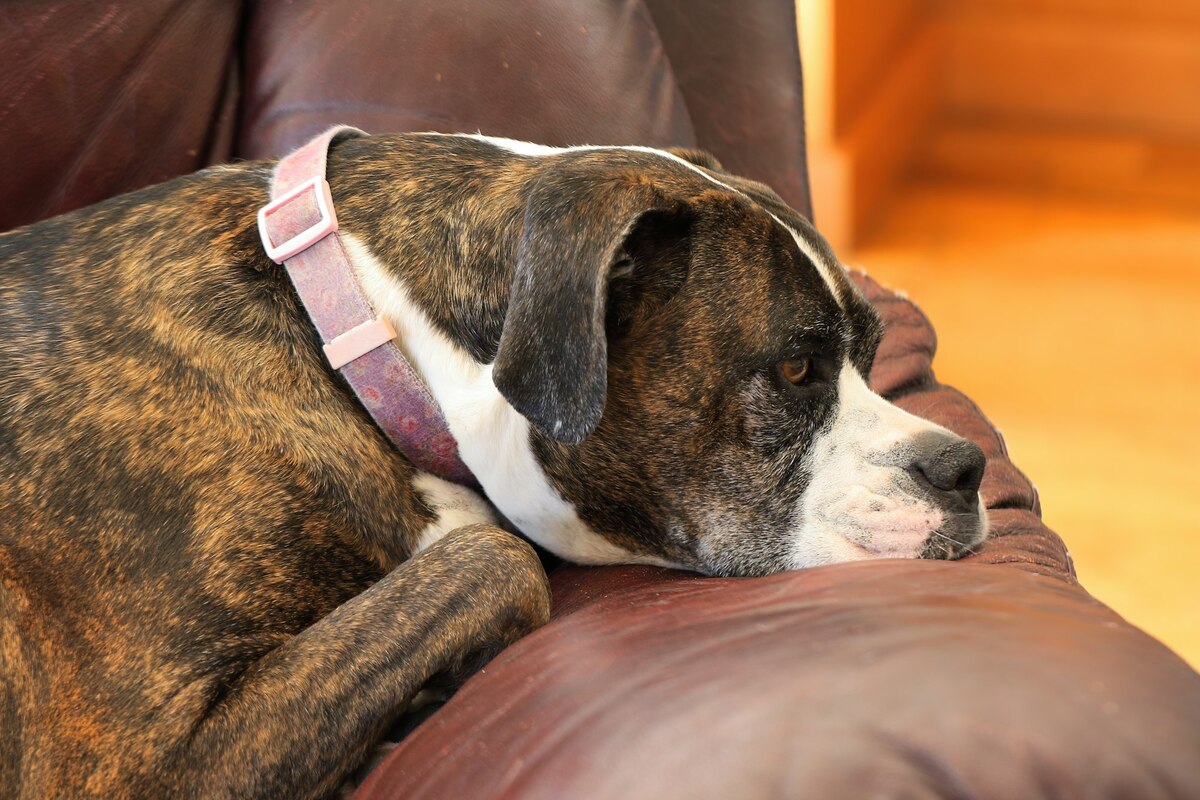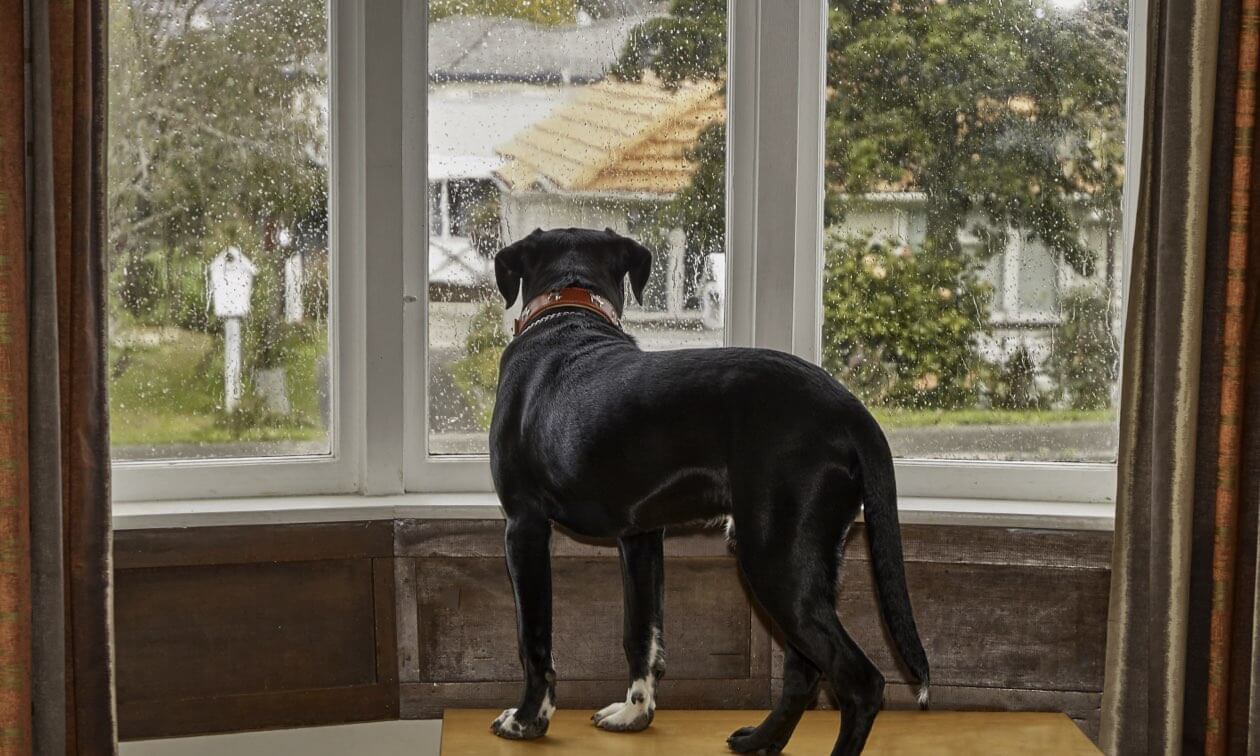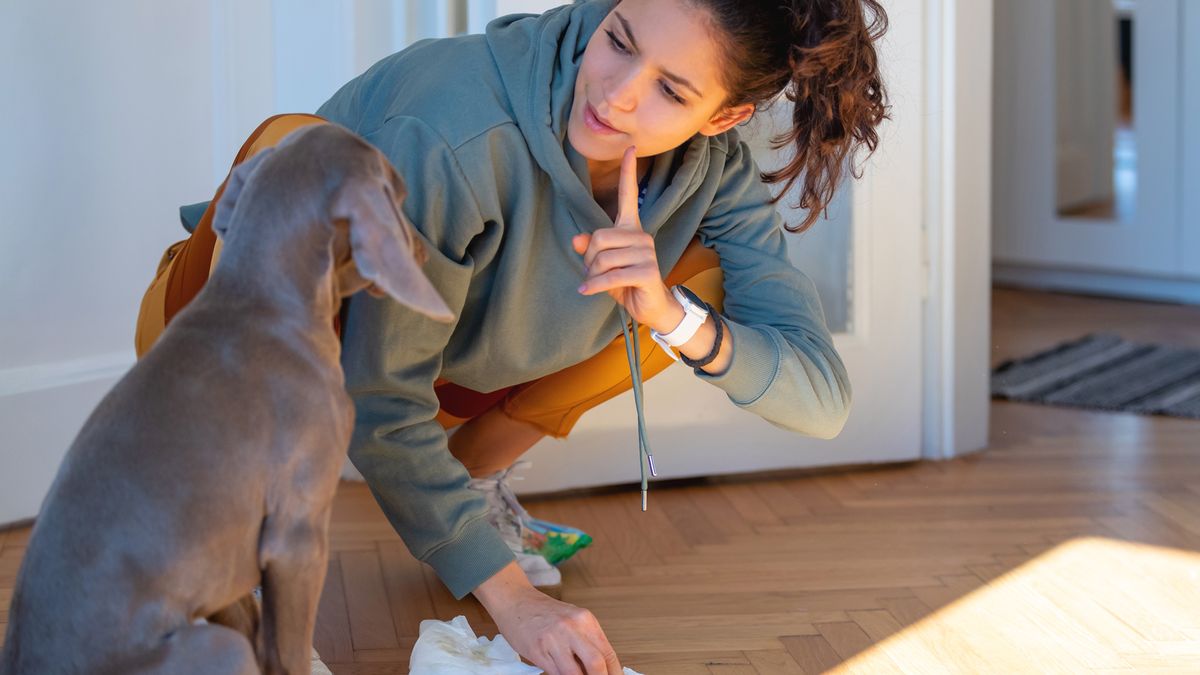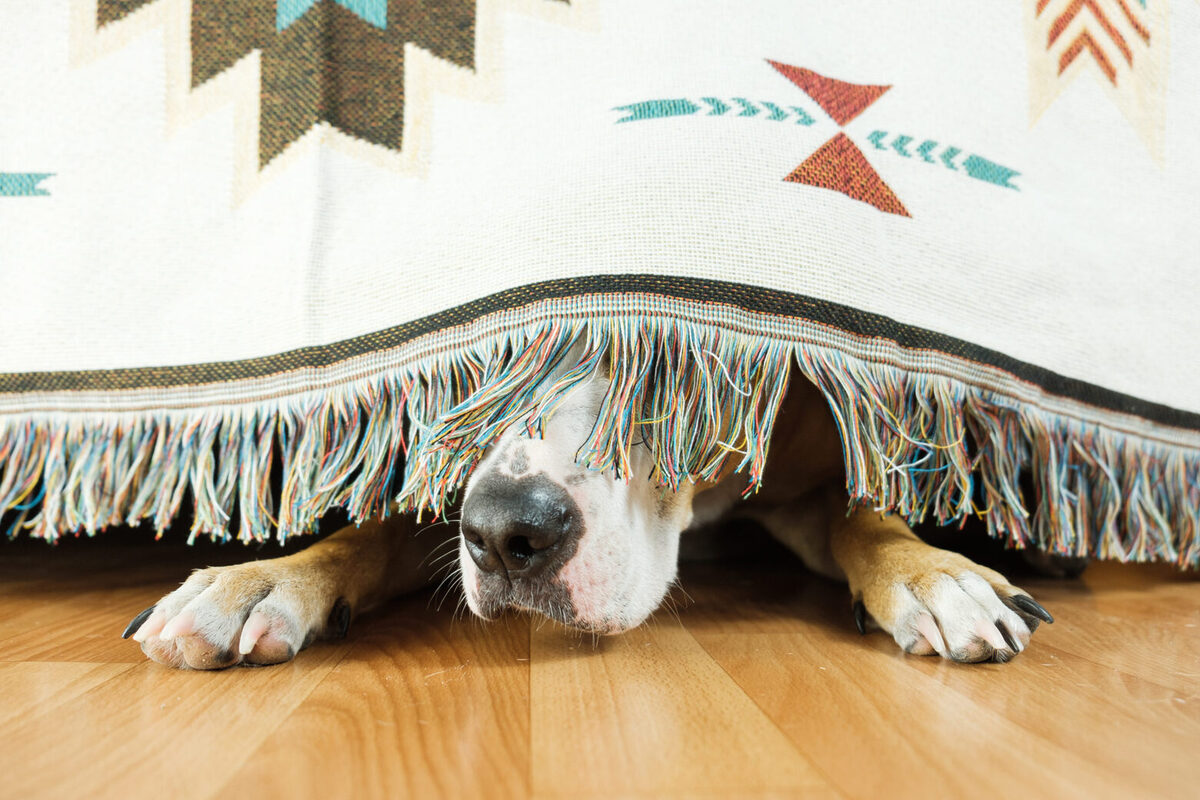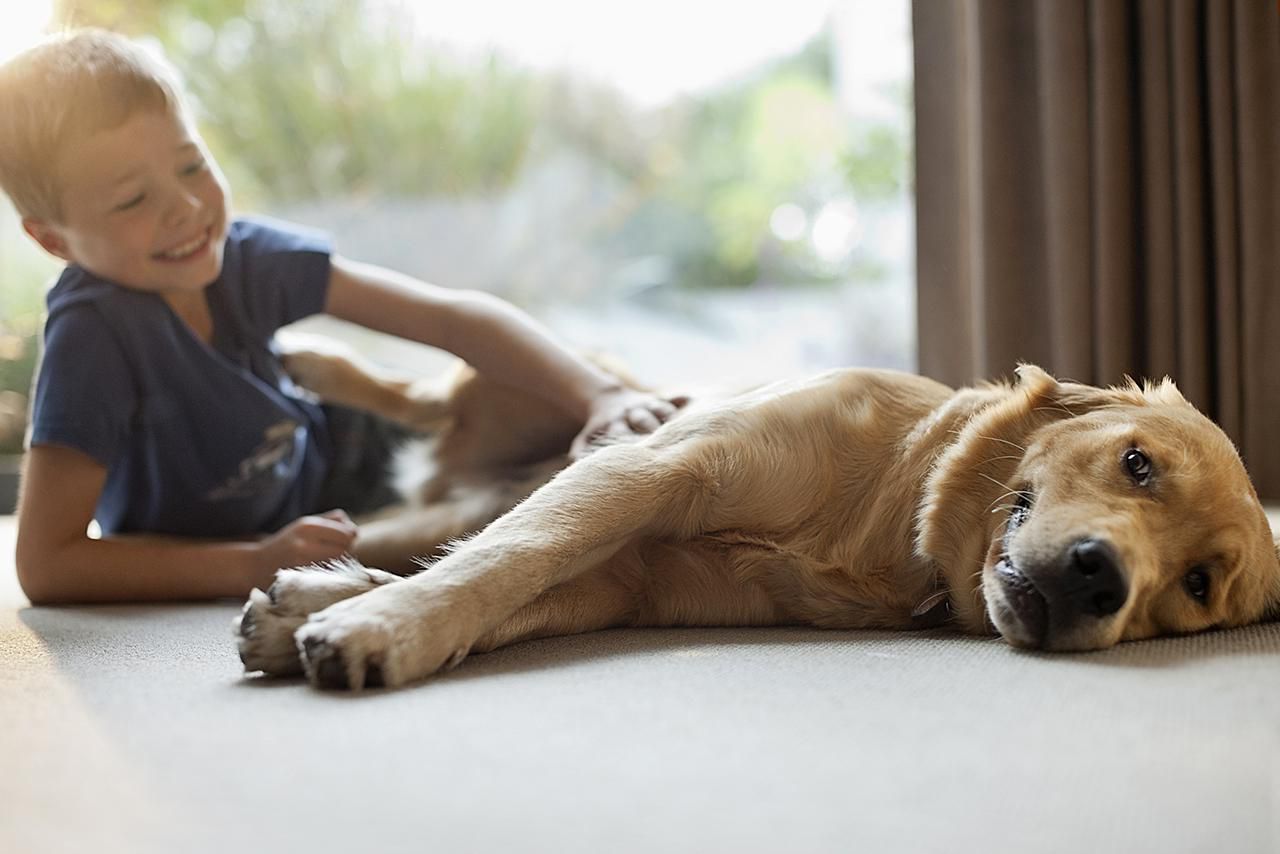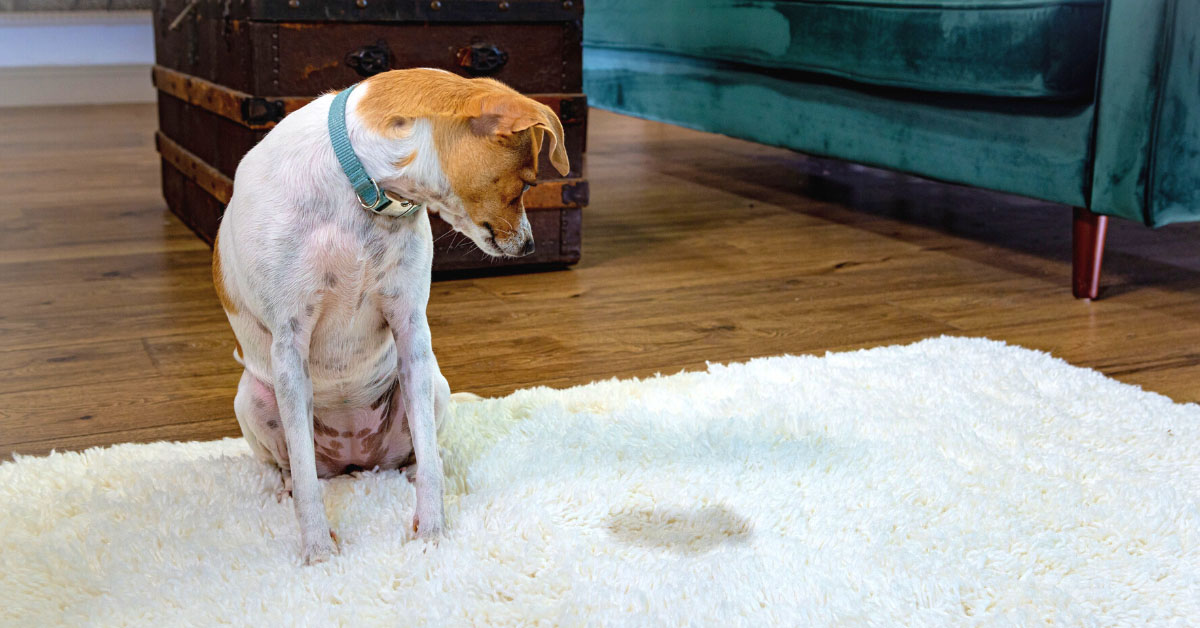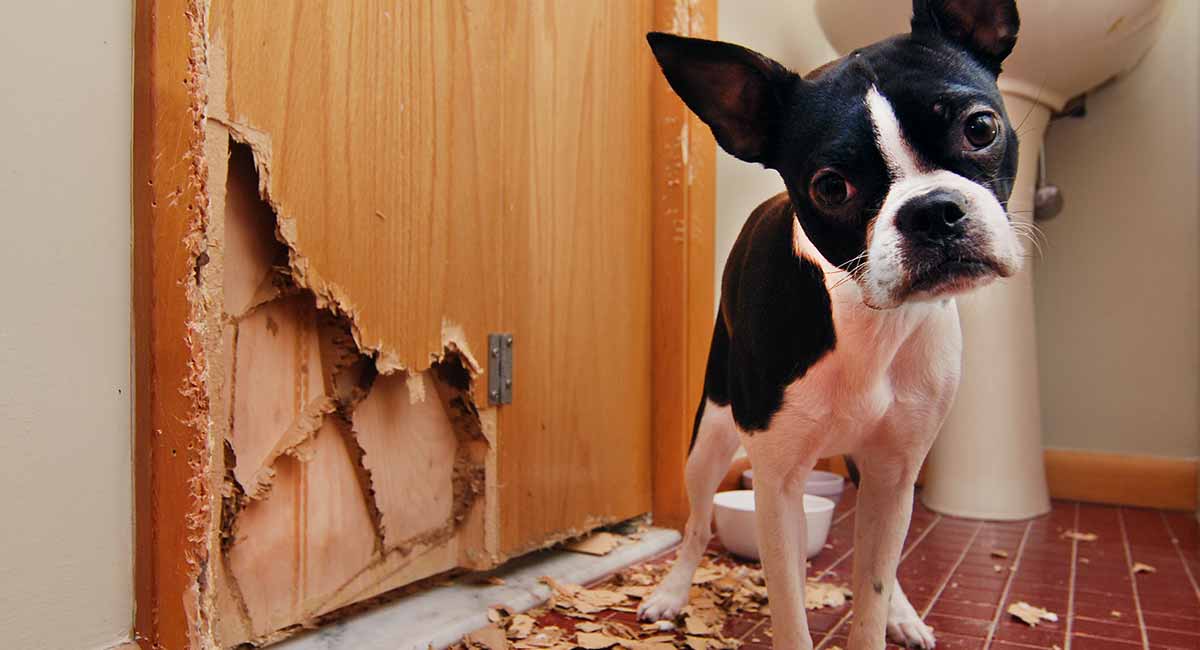Home>Health & Wellness>Behavior & Cognitive Care>How To Train Your Dog To Not Have Separation Anxiety
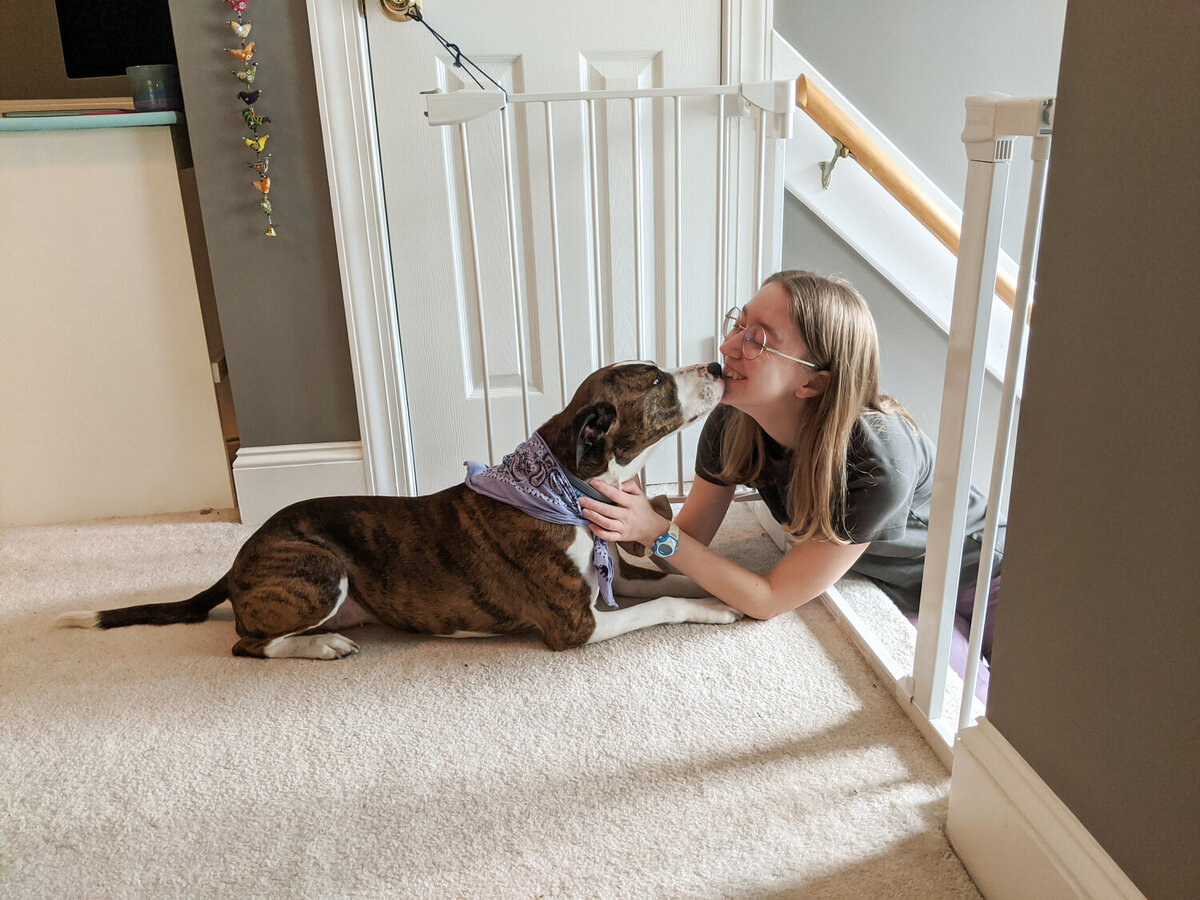

Behavior & Cognitive Care
How To Train Your Dog To Not Have Separation Anxiety
Modified: February 21, 2024
Learn effective techniques to train your dog and prevent separation anxiety. Discover behavior and cognitive care tips for a happier, well-adjusted pet.
(Many of the links in this article redirect to a specific reviewed product. Your purchase of these products through affiliate links helps to generate commission for Pawsomeoldies.com, at no extra cost. Learn more)
Table of Contents
- Introduction
- Understanding Separation Anxiety in Dogs
- Signs and Symptoms of Separation Anxiety
- Tips for Training Your Dog to Overcome Separation Anxiety
- Creating a Safe and Comfortable Environment for Your Dog
- Gradual Desensitization Techniques
- Using Positive Reinforcement and Rewards
- Seeking Professional Help if Needed
- Conclusion
Introduction
Separation anxiety is a common issue that many dog owners face when leaving their furry companions alone. It can be distressing for both the dog and the owner, leading to destructive behavior, excessive barking, and even self-harm in extreme cases. However, with the right approach and training, it is possible to help your dog overcome separation anxiety and feel more at ease when left alone.
Understanding the root causes of separation anxiety and recognizing the signs and symptoms is crucial in addressing this issue effectively. By creating a safe and comfortable environment for your dog and implementing gradual desensitization techniques, you can help them build confidence and independence. Positive reinforcement and rewards play a significant role in shaping your dog's behavior, while seeking professional help can provide additional support if needed.
In this comprehensive guide, we will delve into the intricacies of separation anxiety in dogs and provide practical tips for training your dog to overcome this challenge. By following these strategies, you can help your beloved pet feel more secure and content when you're not around, strengthening the bond between you and ensuring their well-being.
Understanding Separation Anxiety in Dogs
Separation anxiety in dogs is a complex behavioral issue that stems from the distress and fear experienced when a dog is separated from their owner or left alone. This condition is more than just a temporary feeling of unease; it can lead to destructive behaviors and emotional turmoil for the dog. Understanding the underlying causes of separation anxiety is crucial in addressing and managing this issue effectively.
Dogs are social animals that form strong attachments to their human companions. When they become accustomed to constant human presence and interaction, being left alone can trigger feelings of insecurity and anxiety. This is particularly common in dogs that have experienced changes in their routine, environment, or family dynamics. Factors such as moving to a new home, the absence of a family member, or a change in the owner's work schedule can contribute to the development of separation anxiety.
Recognizing the signs of separation anxiety is essential for early intervention. Common indicators include excessive barking or howling when left alone, destructive behavior such as chewing or digging, and attempts to escape confinement. Some dogs may also exhibit symptoms of distress, such as pacing, panting, or drooling, in anticipation of being left alone. It's important to note that these behaviors are not indicative of disobedience or spite; rather, they are manifestations of the dog's emotional distress.
Furthermore, certain breeds are more prone to separation anxiety due to their predisposition for forming strong bonds with their owners. Breeds such as Labrador Retrievers, German Shepherds, and Vizslas are known to be more susceptible to this condition. Additionally, dogs that have experienced early trauma or inconsistent care may be at a higher risk of developing separation anxiety.
Understanding the emotional and psychological impact of separation anxiety on dogs is essential for implementing effective training and management strategies. By acknowledging the distress experienced by our canine companions, we can approach this issue with empathy and patience, working towards creating a sense of security and comfort for our beloved pets.
Signs and Symptoms of Separation Anxiety
Recognizing the signs and symptoms of separation anxiety in dogs is crucial for early intervention and effective management of this behavioral issue. Dogs experiencing separation anxiety may exhibit a range of distressing behaviors and physical symptoms when left alone. By understanding these indicators, dog owners can address the issue proactively and provide the necessary support to help their pets feel more secure and at ease.
-
Excessive Vocalization: Dogs with separation anxiety often engage in excessive barking, howling, or whining when left alone. This vocalization is a manifestation of their distress and serves as a means of seeking attention and reassurance.
-
Destructive Behavior: Dogs may engage in destructive behaviors such as chewing furniture, digging at doors or carpets, or destroying household items in the absence of their owners. This behavior is a result of anxiety and attempts to alleviate their distress through physical activity.
-
Escape Attempts: Some dogs may exhibit escape attempts when left alone, such as scratching at doors or windows in an effort to reunite with their owners. This behavior is driven by the dog's desire to be in the presence of their human companions.
-
Pacing and Restlessness: Dogs experiencing separation anxiety may display restless behavior, pacing back and forth, or exhibiting signs of agitation. This restlessness is a reflection of their emotional turmoil and the discomfort they feel when left alone.
-
Inappropriate Elimination: Accidents within the house, such as urinating or defecating in inappropriate areas, can be a sign of separation anxiety. This behavior is not indicative of a lack of house training but rather a response to the dog's heightened anxiety and distress.
-
Physical Symptoms: Dogs may exhibit physical symptoms of distress, including excessive drooling, panting, and trembling when anticipating being left alone. These physiological responses are a result of the dog's heightened emotional state.
-
Depression and Withdrawal: Some dogs may display signs of depression and withdrawal in response to separation anxiety. This can manifest as a lack of interest in activities they typically enjoy, decreased appetite, or overall lethargy.
Recognizing these signs and symptoms allows dog owners to address separation anxiety with empathy and understanding. By acknowledging the distress experienced by their canine companions, owners can take proactive steps to help their dogs feel more secure and supported when left alone.
Tips for Training Your Dog to Overcome Separation Anxiety
Training your dog to overcome separation anxiety requires patience, consistency, and a deep understanding of your dog's emotional needs. By implementing the following tips, you can help your furry companion build confidence and resilience, ultimately reducing their distress when left alone.
-
Establish a Consistent Routine: Dogs thrive on routine and predictability. By establishing a consistent daily schedule for feeding, exercise, and alone time, you can help your dog feel more secure and less anxious when you're away. Consistency provides a sense of stability and reassurance for your pet.
-
Gradual Departures and Reunions: Practice short departures and reunions to acclimate your dog to your absence. Start with brief periods of separation, gradually increasing the duration over time. This gradual desensitization helps your dog learn that your absence is temporary and that you will return.
-
Create a Safe Space: Designate a comfortable and secure area for your dog to retreat to when you're not at home. This could be a cozy bed, a crate, or a specific room. Fill this space with familiar toys, blankets, and items that carry your scent, providing a soothing environment for your dog.
-
Interactive Toys and Puzzles: Provide your dog with interactive toys and puzzles that can engage their mind and alleviate boredom during your absence. These toys can help redirect your dog's focus and provide mental stimulation, reducing anxiety and destructive behaviors.
-
Desensitization to Cues: Dogs often pick up on cues signaling your departure, such as picking up keys or putting on shoes. Desensitize these cues by performing them without actually leaving, helping your dog disassociate them from your absence.
-
Avoid Making Departures Emotional: When leaving or returning home, maintain a calm and neutral demeanor. Avoid prolonged goodbyes or overly enthusiastic greetings, as these can reinforce your dog's anxiety about your departures and arrivals.
-
Seek Professional Training and Support: If your dog's separation anxiety is severe or persistent, seeking professional help from a certified dog trainer or animal behaviorist is advisable. They can provide tailored strategies and guidance to address your dog's specific needs.
By incorporating these training tips into your daily routine, you can help your dog develop coping mechanisms and a sense of security when left alone. Consistent training, patience, and a supportive environment can make a significant difference in helping your dog overcome separation anxiety.
Creating a Safe and Comfortable Environment for Your Dog
Creating a safe and comfortable environment for your dog is essential in addressing separation anxiety and promoting their well-being when left alone. By establishing a nurturing and secure space, you can help alleviate your dog's distress and provide them with a sense of reassurance and comfort during your absence.
One of the fundamental aspects of creating a safe environment for your dog is to designate a specific area within your home that serves as their sanctuary. This could be a cozy corner in a quiet room, a comfortable bed, or a well-ventilated crate that allows your dog to feel secure. It's important to ensure that this space is free from potential hazards and provides a sense of security for your pet.
Incorporating familiar scents within your dog's designated area can also contribute to their comfort. Items such as blankets, toys, or clothing that carries your scent can provide a source of familiarity and reassurance for your dog when you're not around. These scents can help alleviate anxiety and create a comforting environment that eases their distress.
Additionally, creating a calming atmosphere within your home can significantly impact your dog's emotional state. Playing soothing music or leaving the television on at a low volume can help mask external noises and provide a sense of companionship for your dog. This ambient background noise can reduce feelings of isolation and create a more relaxing environment for your pet.
Ensuring that your dog has access to fresh water, appropriate toys, and engaging activities can also contribute to their overall well-being when left alone. Interactive toys, puzzle feeders, or chew toys can help keep your dog mentally stimulated and alleviate boredom, reducing the likelihood of anxious behaviors in your absence.
Furthermore, maintaining a consistent and predictable routine can help your dog feel more secure and less anxious when left alone. Regular feeding times, exercise schedules, and designated alone time can provide a sense of stability and predictability for your pet, contributing to their overall comfort and well-being.
By creating a safe and comfortable environment for your dog, you can help mitigate the impact of separation anxiety and provide them with the support and reassurance they need to feel secure when left alone. This nurturing environment plays a crucial role in addressing your dog's emotional needs and fostering a sense of calm and contentment in your absence.
Gradual Desensitization Techniques
Gradual desensitization is a proven and effective approach to help dogs overcome separation anxiety by gradually acclimating them to periods of solitude. This technique involves systematically exposing your dog to brief periods of alone time, gradually increasing the duration as they become more comfortable and confident. By implementing gradual desensitization techniques, you can help your dog build resilience and reduce their distress when left alone.
To begin, it's essential to start with very short periods of separation, even just a few minutes, during which you leave the house and then return. This initial step helps your dog understand that your departures are temporary and that you will come back. It's important to remain calm and composed during these brief departures, as your demeanor can influence your dog's emotional response.
As your dog becomes accustomed to these short absences without exhibiting signs of distress, you can gradually extend the duration of your departures. Incrementally increase the time you spend away, always ensuring that your dog remains calm and relaxed during each session. This gradual progression allows your dog to adapt to longer periods of solitude without feeling overwhelmed.
Throughout the desensitization process, it's crucial to observe your dog's behavior and emotional state. Look for signs of anxiety or distress, such as pacing, whining, or destructive behavior. If these signs manifest, it may indicate that you need to regress to shorter separation intervals before progressing further.
In addition to increasing the duration of your departures, varying the times of day when you practice desensitization can be beneficial. This helps prevent your dog from associating specific times with your departures, reducing anticipatory anxiety. By introducing variability, you can help your dog understand that alone time is a normal part of their routine, rather than a cause for distress.
Consistency and patience are key elements of gradual desensitization. It's important to progress at a pace that is comfortable for your dog, allowing them to acclimate to each stage before moving forward. Rushing the process can lead to setbacks and heightened anxiety, whereas a gradual and patient approach can yield significant progress over time.
By implementing gradual desensitization techniques, you can help your dog develop the confidence and resilience needed to overcome separation anxiety. This approach, coupled with a supportive and nurturing environment, can empower your dog to feel more secure and at ease when left alone, strengthening the bond between you and enhancing their overall well-being.
Using Positive Reinforcement and Rewards
Positive reinforcement is a powerful tool in shaping your dog's behavior and can play a significant role in helping them overcome separation anxiety. By utilizing positive reinforcement techniques and offering rewards, you can encourage desirable behaviors and create a positive association with alone time, ultimately reducing your dog's distress and anxiety.
When implementing positive reinforcement, it's essential to focus on rewarding behaviors that reflect calmness, relaxation, and independence. For example, when your dog remains calm and composed during brief periods of alone time, offer verbal praise, gentle petting, or a small treat to reinforce this behavior. By doing so, you are reinforcing the idea that being alone is a positive and rewarding experience.
Consistency is key when using positive reinforcement. Ensure that you consistently reward your dog for displaying relaxed and confident behavior during alone time. This reinforcement helps your dog understand that their calm demeanor is desirable and leads to positive outcomes, strengthening their confidence and reducing anxiety.
In addition to verbal praise and physical affection, using high-value treats as rewards can be particularly effective. Choose treats that your dog finds especially enticing and reserve them specifically for alone time training. When your dog exhibits calm behavior during your departures, offer these special treats as a reward, creating a strong positive association with being alone.
It's important to note that the timing of rewards is crucial in positive reinforcement. Offer the reward immediately after your dog displays the desired behavior, as this helps them make a clear connection between their actions and the positive outcome. This immediate reinforcement reinforces the behavior you want to encourage, making it more likely to be repeated in the future.
Furthermore, incorporating interactive toys and puzzle feeders as part of the reward system can engage your dog's mind and provide a positive distraction during alone time. These stimulating activities not only serve as rewards but also help alleviate boredom and anxiety, contributing to a more positive experience for your dog.
By consistently using positive reinforcement and rewards, you can help your dog associate alone time with positive experiences and feelings of security. This approach, combined with other training strategies, can empower your dog to develop the confidence and resilience needed to overcome separation anxiety, ultimately leading to a happier and more contented canine companion.
Seeking Professional Help if Needed
In some cases, addressing and managing a dog's separation anxiety may require the expertise of a professional, such as a certified dog trainer or an animal behaviorist. While many dog owners can successfully implement training and management strategies on their own, there are instances where seeking professional guidance becomes essential for the well-being of the dog.
Professional trainers and behaviorists possess specialized knowledge and experience in understanding canine behavior and addressing complex issues such as separation anxiety. They can conduct a thorough assessment of the dog's behavior, environment, and overall well-being to develop tailored strategies that suit the specific needs of the dog and their owner.
One of the key benefits of seeking professional help is the personalized approach to addressing separation anxiety. Professionals can identify underlying triggers and contributing factors that may be exacerbating the dog's distress, allowing for targeted interventions that address the root causes of the anxiety. This individualized approach can lead to more effective and lasting results in helping the dog overcome their anxiety.
Additionally, professional trainers and behaviorists can provide valuable guidance and support to dog owners, offering practical techniques and advice for implementing training protocols and creating a supportive environment for the dog. Their expertise can empower dog owners with the knowledge and skills needed to effectively manage separation anxiety and promote their dog's emotional well-being.
In some cases, addressing severe or persistent separation anxiety may require the integration of behavior modification techniques or the use of specific training tools. Professionals can offer insights into these advanced methods, ensuring that they are implemented safely and ethically to benefit the dog.
Furthermore, seeking professional help can provide reassurance and support for dog owners who may feel overwhelmed or uncertain about addressing their dog's separation anxiety. Professionals can offer guidance on managing expectations, setting realistic goals, and navigating the emotional aspects of helping a dog overcome anxiety, fostering a sense of confidence and empowerment for the owner.
Ultimately, the decision to seek professional help for a dog's separation anxiety should be driven by a commitment to the dog's well-being and a desire to provide the best possible support and care. By leveraging the expertise of professionals in the field of dog behavior and training, dog owners can access valuable resources and guidance to help their beloved pets lead happier, more balanced lives.
Conclusion
In conclusion, addressing and managing separation anxiety in dogs requires a multifaceted approach that encompasses understanding the root causes of the issue, recognizing the signs and symptoms, and implementing effective training and management strategies. By acknowledging the emotional distress experienced by dogs when left alone, dog owners can take proactive steps to create a supportive and nurturing environment that promotes their well-being.
Understanding the complex nature of separation anxiety and its impact on dogs is crucial for developing empathetic and effective interventions. Dogs form deep emotional bonds with their human companions, and disruptions to their routine or environment can trigger feelings of insecurity and distress. Recognizing the signs of separation anxiety, such as excessive vocalization, destructive behavior, and physical symptoms of distress, allows dog owners to intervene early and provide the necessary support.
Training dogs to overcome separation anxiety involves creating a safe and comfortable environment, implementing gradual desensitization techniques, and utilizing positive reinforcement and rewards. Establishing a consistent routine, providing interactive toys, and desensitizing dogs to departure cues are essential components of this training process. Additionally, creating a secure and comforting space within the home and seeking professional help when needed can significantly contribute to a dog's ability to cope with being alone.
It's important to emphasize that addressing separation anxiety requires patience, consistency, and a deep understanding of each dog's unique needs and triggers. By approaching this issue with empathy and a commitment to the well-being of our canine companions, we can help them build resilience, confidence, and a sense of security when left alone.
In conclusion, by implementing the strategies outlined in this guide and, when necessary, seeking professional guidance, dog owners can make meaningful strides in helping their pets overcome separation anxiety. This not only strengthens the bond between dogs and their owners but also fosters a sense of emotional well-being and contentment for our beloved canine companions.

